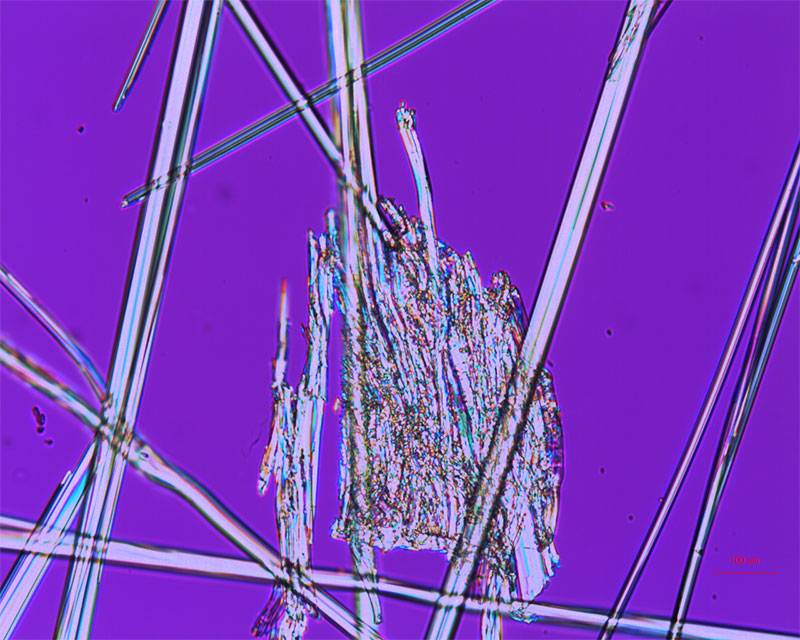Polarized Light Microscopy
Polarized light microscopy (PLM) is the go-to technique for determining if a sample is crystalline or not. Simply speaking, an amorphous sample will not exhibit birefringence under polarized light whereas a crystalline sample will. When conducting polymorph screens, PLM can be used to assess amorphous/crystalline content to identify those samples which should be further characterized by XRPD. PLM can also distinguish different crystalline polymorphs based on shape, morphology, size and other optical characteristics.
PLM is an extremely important and powerful tool in pharmaceutical research and development, raw materials, intermediate compounds, active pharmaceutical ingredients (API), excipients, diluents, and drug product (DP), as well as enclosure and packaging materials. In combination with other analytical chemical microscopy techniques, the use of PLM can lead to solving complex problems that otherwise go unrealized. Improved Pharma’s polarized light microscopes include:
- Olympus BX51 TRF, polarized light microscope with vertical reflected dark-field and bright-field capabilities (including fluorescence microscopy capabilities) with HD digital imaging.
- OLYMPUS BH2- BHS, reflective polarized light microscope with HD digital imaging.

